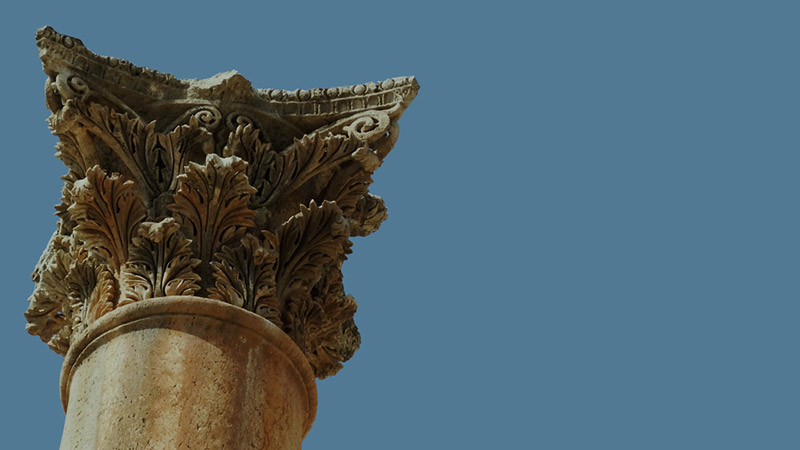More Results
Showing 12 of 123
Articles

The Jewish Revolts
The Jewish RevoltsJewish people of Jesus' day had a passionate desire for freedom from the domination of the pagan Romans and the oppressive Herod dynasty that had ruled them for many years. Revolt seethed continuously, mostly underground, for mor...
MORE
The Lord is my Shepherd
The WildernessWe may not want to face the wilderness, but the "rocks" of life are the very places where God often brings sweetness into our lives.Rugged wilderness covers much of Israel. The two most prominent deserts are the Judea Wilde...
MORE
The Salt of the Earth
The City of SardisLocated on Mount Tmolus in southern Turkey, the city of Sardis stood at the crossroads of Asia Minor, the most prosperous, powerful, fertile, and pagan province of the entire Roman Empire. First-century Sardis had a unique blend ...
MOREEncyclopedia

The Ark of the Covenant
The ark of the covenant was a symbol of God's presence among the Israelites a visual reminder that the one true God had made a covenant with them. It was so important to God that he described the arks construction before describing any other sacre...
MORE
The City of Dan
LocationThe city of Dan, originally called Laish, is located in northern Israel. To the east are the remarkable slopes of Mount Hermon, and the city of Caesarea Phillippi. About 30 miles south of Dan lays the Sea of Galilee.ArchaeologyArcheologist...
MORE
The Entrance to the Water Shaft on Tel Megiddo
The water source for Megiddo was a spring at the base of the hill on which this strategic city was built. From its early history through the time of Solomon, the people reached the water by walking through a small postern gate and into a gallery (...
MORE
The Fortress Masada
The plateau Masada is located in the remote Judean desert. Because this desert was bordered by the more fertile mountain ridge of the land of Israel, Masada was close to more hospitable areas.The attraction of the location for Herod was that he co...
MORE
The High Place and Altar at Dan
The high place at Dan, in northern Israel, dates to 920 BC, when Israel was divided into the northern (Israel) and the southern (Judah) kingdoms.The high place measured 62 feet square and was surrounded by a wall. On top of the high place were bui...
MORE
The New City
This view is from the northwest looking southeast across the New City. Jerusalem expanded to the north in Jesus' time, to the area in the foreground called the New City. The wall in the center is the second wall, and the area inside it is the busi...
MORE
The Shephelah
Shephelah is a Hebrew word meaning "low" and is usually translated "lowlands" or "foothills." The term refers to a twelve to fifteen-mile wide region in Judea, comprised of foothills that are located between the coast...
MOREGlossary

Temple Mount
The ridge on which Jerusalem's Temple was built and/or the platform on which the Temple and its courts stood. King Herod's platform was supported by massive walls, the tallest standing 160 feet, and measured more than 1,500 feet long, north to sou...
MORE
Temple Mount Definition
' The ridge on which Jerusalem's Temple was built and/or the platform on which the Temple and its courts stood. King Herod's platform was supported by massive walls, the tallest standing 160 feet, and measured more than 1,500 feet long, north to ...
MORE

















